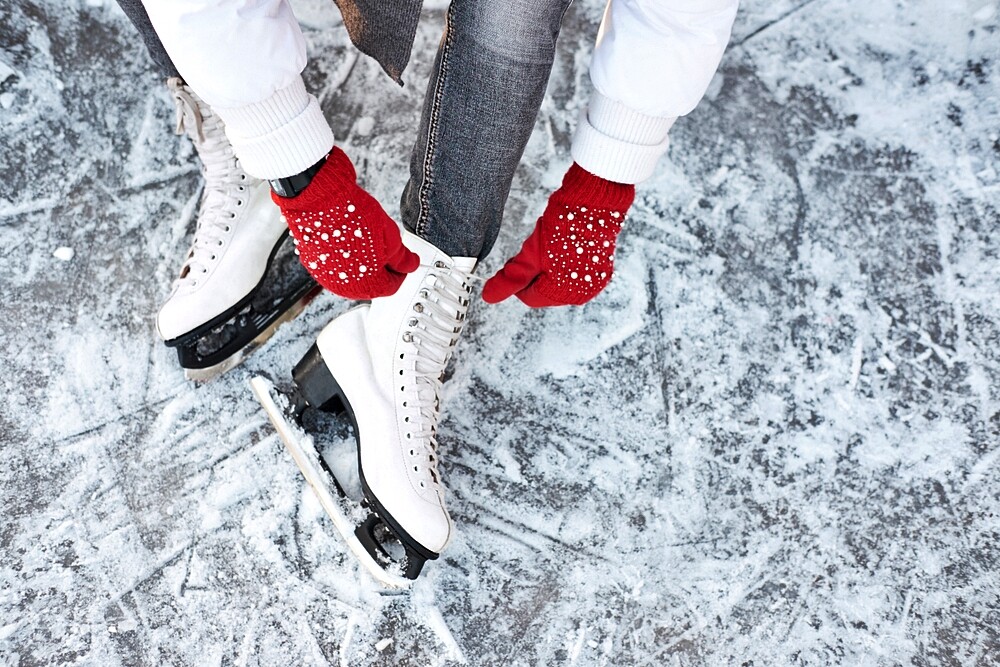From exclusive sport for the nobility to popular sport: you too can easily learn to skate with our five simple steps.
Learning to ice skate: The all-purpose weapon in winter! 😊
Maybe you tried skating as a child, but many years have passed since then? Don’t worry. You are never too old to learn to skate (again)!
Especially in the cold season we often ask ourselves: What can you do in winter? Flitting over the ice is a great activity for various occasions.
- Sports activities in winter
- Excursion with family or friends (and afterwards there is mulled wine …)
- As activity for your next date
Ice skating promotes your sense of balance and trains your endurance. It is therefore a great addition to jogging in winter.
Learn to ice skate in 5 easy steps!
1. Choose suitable ice skates and runners
Skates of good quality have their price! At the beginning it is enough to rent skates from the ice rink. That way you can see what size and shape suits you.
Make sure you feel a firm grip on your ankle. The skate has to be tight so that you don’t buckle. To glide over the ice like a princess, make sure the blades are accurately sharpened.
2. Get a feel for the ice
Every beginning is hard! When you take your first steps on the ice, you will probably be very insecure and shaky. First hold on to the edges of the rink. This will give you a feeling for the ice and you can decide for yourself when you want to break away.
3. Adopt the correct posture
Open the toes so that the heels touch each other. This way, when running, shift the weight from one leg to the other so that the feet move side by side instead of in front of each other.
Crouch down and keep your knees bent. This will give you a much better stand and prevent you from falling.
4. Start with small steps
When you have released yourself from the gang, first move forward very carefully. Like dancing or riding a bicycle, it helps you to look forward and not down. Your body follows your head and you don’t want to fall down …😉
Glide forward with both feet alternately and do not repeat the steps until you have come to a halt again. Only when you feel secure can you establish a flowing movement without pauses.
Later, when you are able to glide with both feet in a controlled manner, you should learn to glide alternately on one leg.
5. Learn to brake and fall down
Similar to roller skating, you brake your skates by pulling the front of a skate behind you. The weight remains on the front foot.
Even the biggest pro falls down once! But don’t worry, with the right technique it won’t hurt at all! As described in step 3, always squat down when you lose your balance. If this is not enough, support your hands as a fist on the ice and try to come up with your flat fingers (not your ankles!!).
3 practical tips!
- Wear thick socks: Cotton socks are ideal for skating. With them you kill two birds with one stone. Your feet have air to breathe and you get super comfort in your skates.
- Safe waters: As soon as a lake freezes over, the temptation to go there is great. For a safe hold, an ice cover of at least 15 cm is required. You should definitely only skate on officially approved lakes. You can play it safe in one of the numerous ice rinks.
- A professional at your side: To learn to skate, it’s best to get someone who can skate on the ice. You will feel safer with his company alone. He can also correct your posture and hold you during your first attempts at walking. Alternatively, you can practice in an ice skating school with professional guidance.

